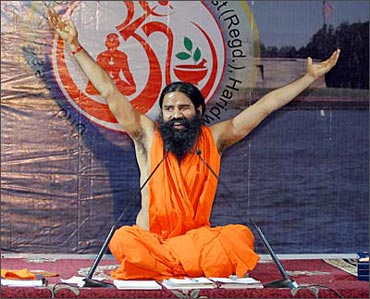
Manipulative multinationals, says the yoga guru and crusader, suck out more money than they bring in, and take jobs away from local artisans and craftsmen.
In his utopian scheme of things, there is no role for multinationals - the Rs. 300,000 crore (Rs. 3,000 billion) worth of black money stashed abroad is back in the country to run its power plants, build roads and reach water to the fields; people do an honest day's work, after an hour or two of Yoga in the morning, and read religious texts before they hit the bed.
...

The dislike for multinationals was nowhere to be seen this April when Ramdev's Patanjali Ayurved tied up with Tetra Pak, the world's top packaging solutions company, to sell juices and other concoctions.
Already, its gooseberry juice in Tetra Pak packages, Amla Amrit, is out in the market - 65 ml for just Rs. 5.
As many as 30 new drinks, in categories like apple and grape, could follow in the days to come.
"We want to provide pure and healthy products to our countrymen. Keeping this in mind, we are going to launch our products in Tetra Pak packages," Ramdev had said, with confidence and pride in equal measure, after he had inaugurated the Patanjali Ayurved factory at Haridwar.
...
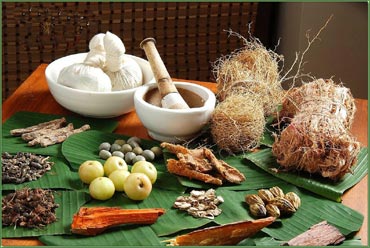
The dislike for the multinational business model is also nowhere to be seen in some of Ramdev's recent initiatives.
He has bought Herbo Ved, an ayurvedic products company, in the United States for an undisclosed sum. He sells all over the world, from the United States to West Asia. The Scottish Island "donated" to him by followers Sam and Sunita Poddar (they bought it in 2009 for around Rs. 16 crore (Rs. 160 million); it has since been renamed Peace Island), could soon become an upscale retreat with cottages, therapy schools and laughter classes.
Religion has always been good business. And godmen, it seems, make rock-star businessmen.
...

They run large businesses like industrialists, control huge assets like landlords, advise top businessmen like consultants, settle disputes like lawyers, and at times "persuade" the government like lobbyists.
With their vast armies of followers and "magical powers", many of them wield awesome clout in the corridors of power. This, in turn, can facilitate donations which help run businesses, ashrams, charities etc.
Chandraswami of the Vishwa Dharmayatan Sanstha counted amongst his followers two prime ministers, P V Narasimha Rao and Chandrashekhar, the Sultan of Brunei, arms dealer Adnan Khashoggi, Elizabeth Taylor and Nancy Reagan.
Then, in 1996, Chandraswami was arrested on charges of duping Lakhubhai Pathak, a London-based businessman, for $100,000.
The same year, the Enforcement Directorate filed charges of flouting foreign exchange regulations.
On Wednesday, Chandraswami told the Supreme Court that he was willing to pay Rs. 9 crore (Rs. 90 million) to settle the dispute.
There has always been a veil of secrecy over the businesses and assets godmen control.
...

Ramdev, under pressure to disclose his financials, last week announced that his four trusts (the Divya Yoga Mandir Trust, Patanjali Yogpeeth Trust, Bharat Swabhiman Trust and Acharyakul Shiksha Sansthan) have a corpus of Rs. 426.19 crore (Rs. 4.261 billion), which has accrued through donations and the sale of medicine, and have incurred expenditure of Rs. 785.09 crore (Rs. 7.850 billion) thus far.
There was no mention of his companies in the disclosure.
Ramdev's main companies are Patanjali Ayurved (turnover of Rs. 320 crore [Rs. 3.2 billion]) and Divya Pharmacy (Rs. 300 crore [Rs. 3 billion]). And profits? Ramdev had told Business Standard last year that his profit margins are 16 per cent, though his products are priced up to 50 per cent below rivals.
The Patanjali Ayurved factory can produce 32,000 packs in an hour. The company has 1,500 outlets across the country.
...
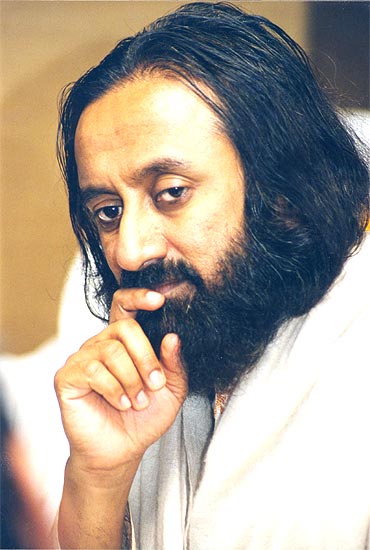
Ramdev's products also sell through post offices. Acharya Balkrishan, a close aide of Ramdev, owns a company called Vedic Broadcasting which runs Aastha, a religious television channel.
"With the blessings of our Guru (Ramdev), our business is flourishing and we will soon capture the world market as well," says an executive of a company that belongs to Ramdev.
A year ago, Ramdev set up Patanjali Food and Herbal Park spread over 125 acres at Padartha in Haridwar, which entailed an investment of Rs. 500 crore (Rs. 5 billion).
The food park, Ramdev has said, will religiously follow the norms laid down by the United States Food and Drug Administration; the destination of the produce should leave nobody in doubt.
Ramdev was earlier in the week persuaded to break his fast against corruption and black money by Sri Sri Ravi Shankar of the Art of Living Foundation.
The two are often seen together, and obviously share similar beliefs. The ashram of the Art of Living Foundation, on the outskirts of Bangalore, spread over 70 or so acres, houses, amongst others, an Ayurveda hospital and software company Sumeru Software.
As many as 250 people work for it in the ashram, and it has branches in the United States and South Africa.
...
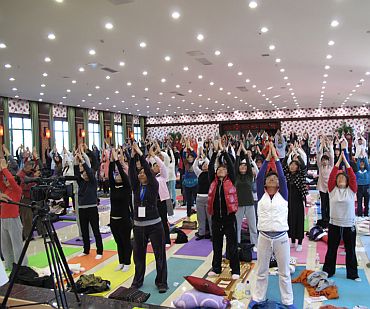
A part of the profit the company makes goes to charity. The foundation believes that only a profitable organisation can do charity; donations don't add up to much.
Art of Living Foundation, founded in 1981, has over 3,000 centres across the world teaching Sudarshan Kriya - the latest is a 157-acre campus in Beijing.The foundation doesn't run all the centres itself and appoints franchises. All one has to do to get a franchise is complete one of the courses at the ashram. The basic course costs Rs. 1,200. It also earns money from the sale of its publications and Ayurvedic medicine.
The money is channeled into social work. The Art of Living Foundation is today one of the world's largest volunteer-based, humanitarian and educational NGOs. Its message has reached over 300 million people in over 140 countries.
...
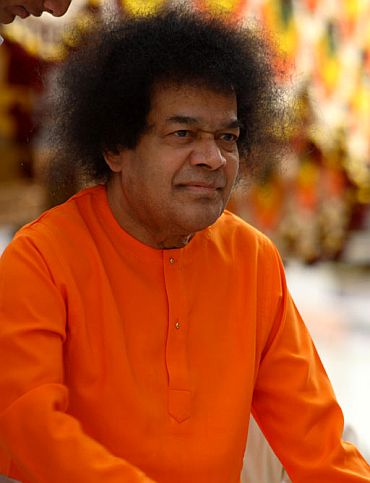
The scale is huge but not uncommon to godmen. In the days following the hospitalisation and later, death, of Satya Sai Baba in April this year, various estimates of the empire he had created in his lifetime did the rounds, ranging from Rs. 5,000 crore (Rs. 50 billion) to Rs. 130,000 crore (Rs. 1,300 billion).
At the first press conference held after his death, office-bearers of the Sri Sathya Sai Central Trust tried to squash these figures, and said its income, coupled with that of the Sathya Sai Medical Trust, in the last 14 years was Rs. 100 (Rs. 1 billion) to 130 crore (Rs. 1.3 billion) a year, while expenditure was Rs. 75 (Rs. 750 million) to 100 crore (Rs. 1 billion).
Debatable as that might be, there is no doubt about the assets that Sai Baba had at his disposal - this includes a 300-bed super-specialty hospital spread over 105 acres at Puttaparthi, where Sai Baba was based, built at a cost of Rs. 65 crore in 1991, another in Bangalore built in 2001 for Rs. 130 crore, the main ashram, Prashanthi Nilayam, in Puttaparthi constructed on 70 acres, a private airstrip, educational institutions, a planetarium and various centres in 167 countries across the world.
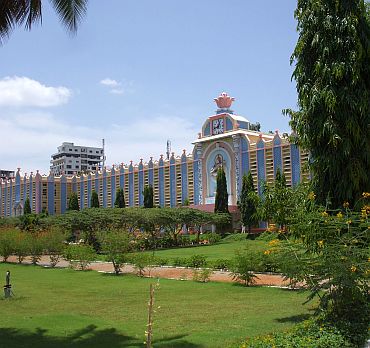
The real business in Puttaparthi is what Sai Baba spawned indirectly. The steady influx of devotees throughout the year, when Sai Baba was alive, barring the peak summer months, also meant steady business for the hotels, taxi operators and shops Puttaparthi is full with.
...
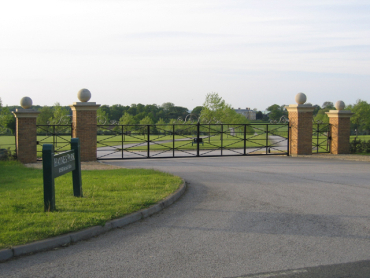
Prosperity is visible from a distance at the dera of the Radhasoami Satsang at Beas in Punjab. It houses about 7,000 people, including staff and kar sewaks.
The venue where the Guru of the Satsang gives discourses covers about 30 acres and can seat as many as 250,000 people.
...
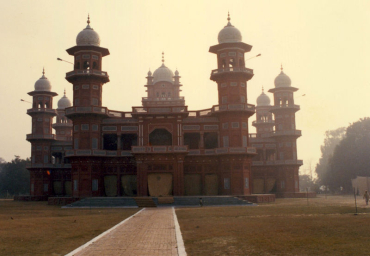
It manages its own water supply, water treatment plant and solid waste treatment facility. It owns large generators to supply emergency power to the whole community.
Inside the dera, the feel of a military camp is unmistakable. Hordes of people come from all over the world to Beas to hear the guru.
...

"We welcome lakhs of visitors annually here; some decide to stay and become kar sewaks as well," informs the manager of food at the Satsang.
The lady says that they can feed about 275,000 people at one go at the dera when the annual bhandara happens. There's an air strip at the dera which bigwigs use for a quick darshan of the guru.
Amongst the high-profile followers of the Satsang are the Singhs of Fortis and Religare.
...
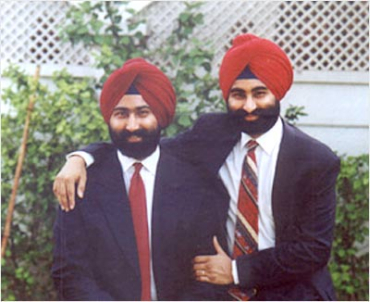
When the Guru died in 1991, there was a strong buzz that Parvinder Singh, Malvinder and Shivinder's father and the owner of Ranbaxy at that time, would succeed him.
But that didn't happen. Till Ranbaxy got sold to Daiichi Sankyo of Japan in 2008, the Satsang had a discernible presence on the company's board.
For instance, Delhi Lt Governor Tejinder Khanna, one-time Ranbaxy chairman, is a follower of the Satsang. His father, KL Khanna, was after all the secretary of the Satsang at Beas.
...

Apart from Beas, the Satsang runs deras across the world and operates a 260-bed charitable hospital at Beas.
"Sab baba di mehr hai" (It's the guru's grace), says Gurnam Singh, a rickshaw-puller, who refuses to take money from the Beas bus stand to the dera.
Such is the presence of the Satsang in Beas that almost the entire town is grateful to the guru who has taken them on the path of spiritual development and, of course, prosperity.
With contributions from Aabhas Sharma, Praveen Bose and Indulekha Aravind